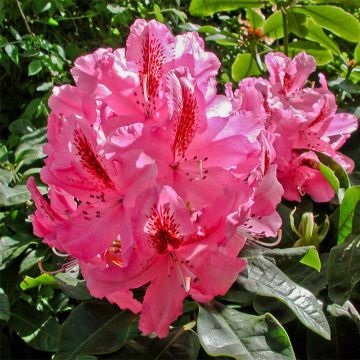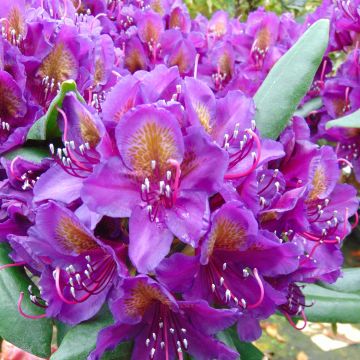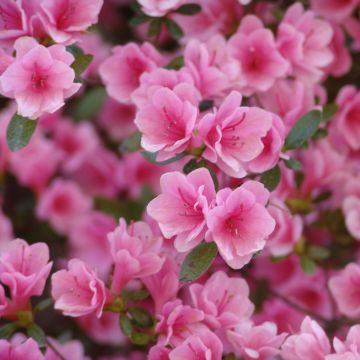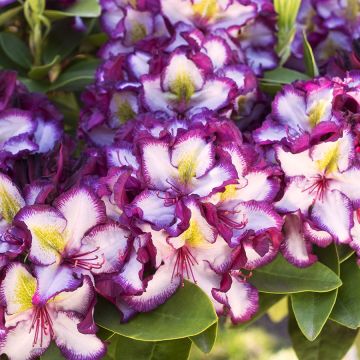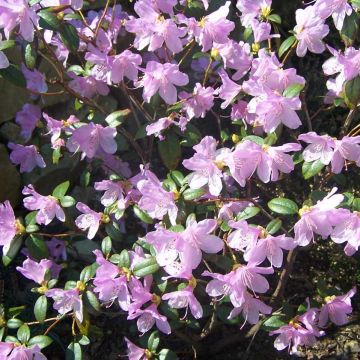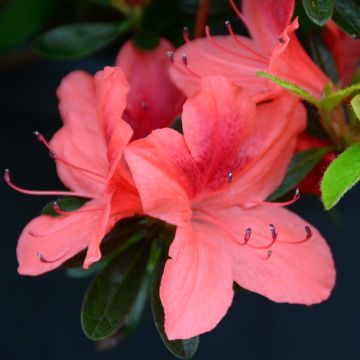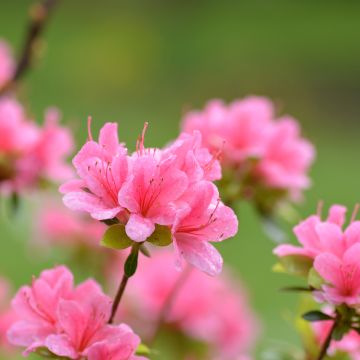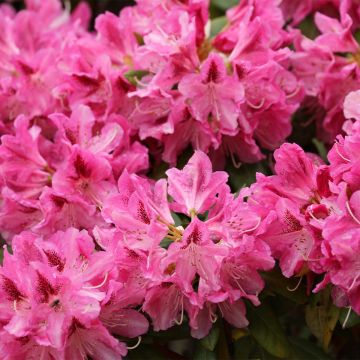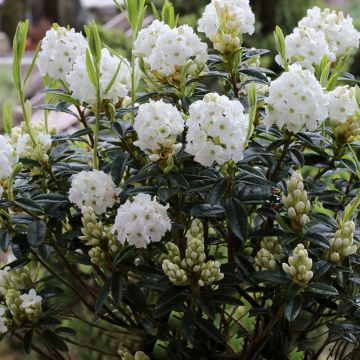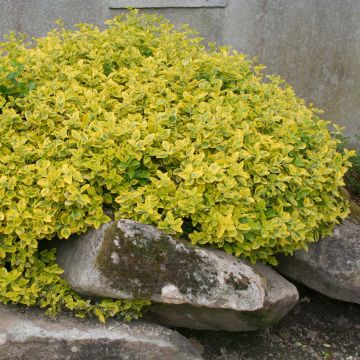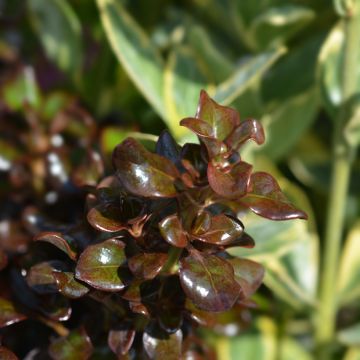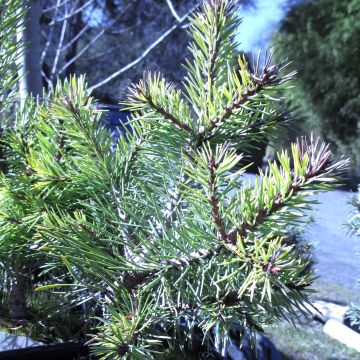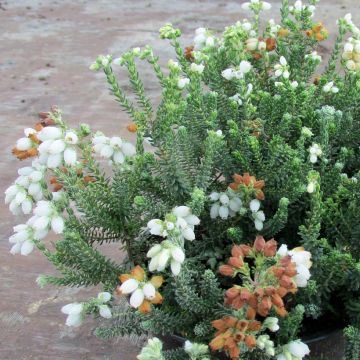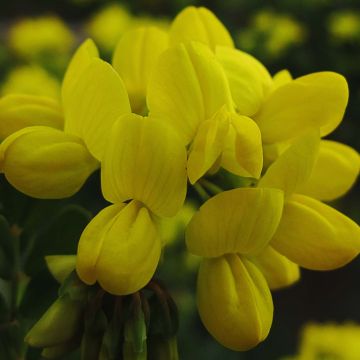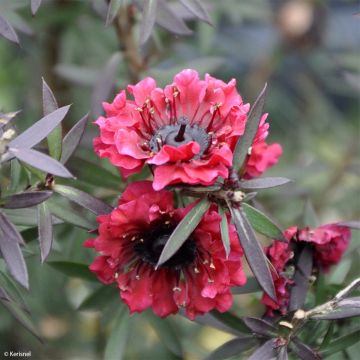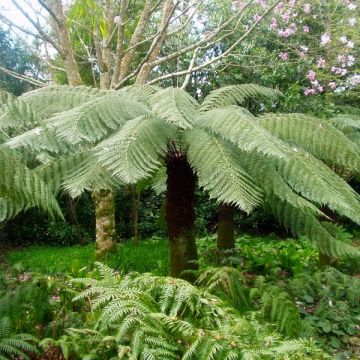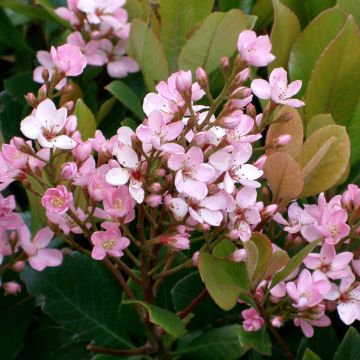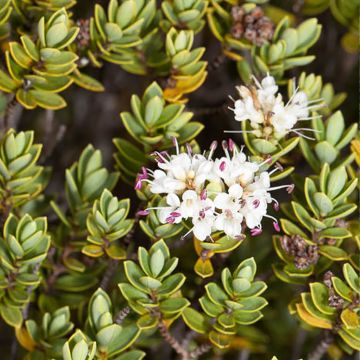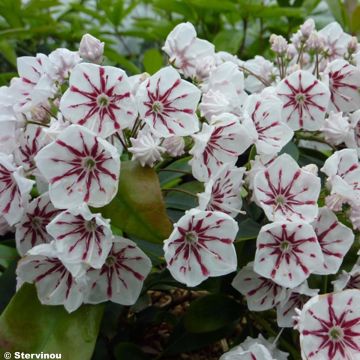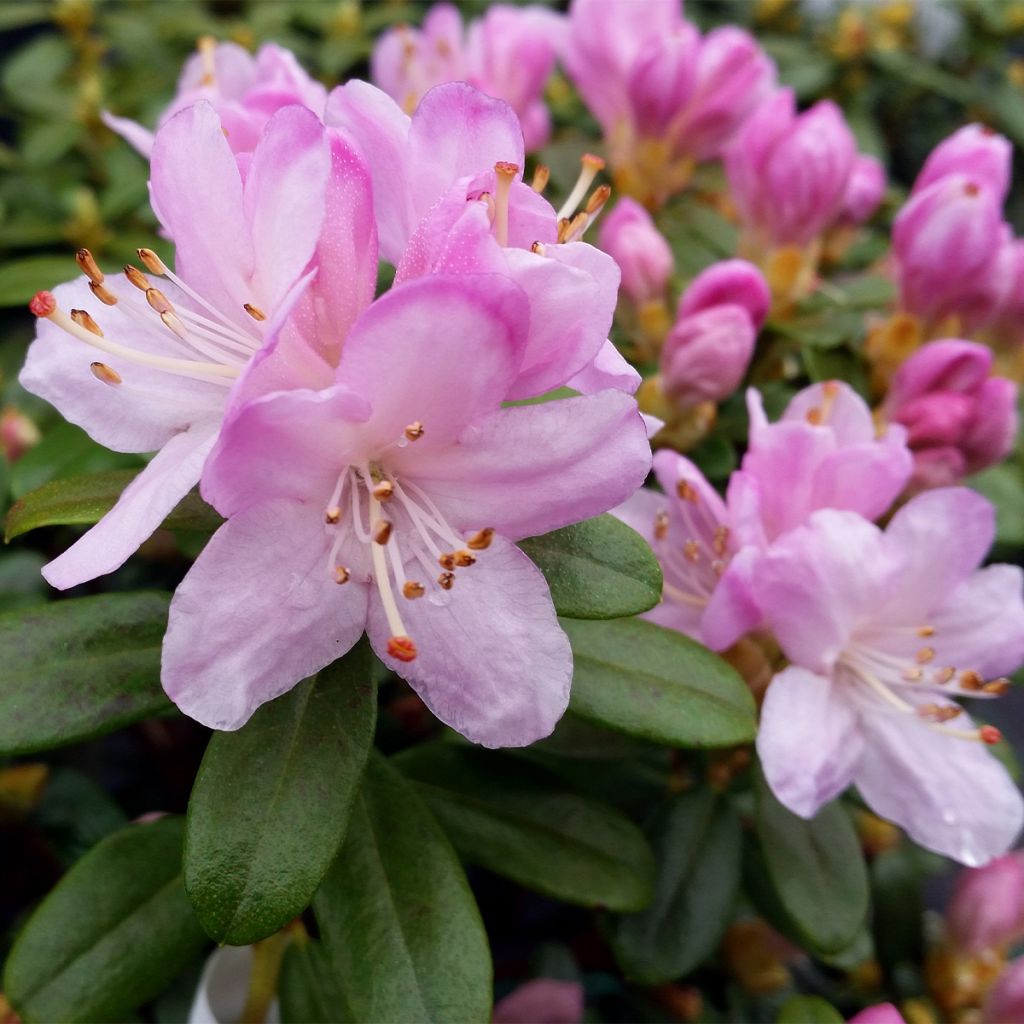

Rhododendron Snipe
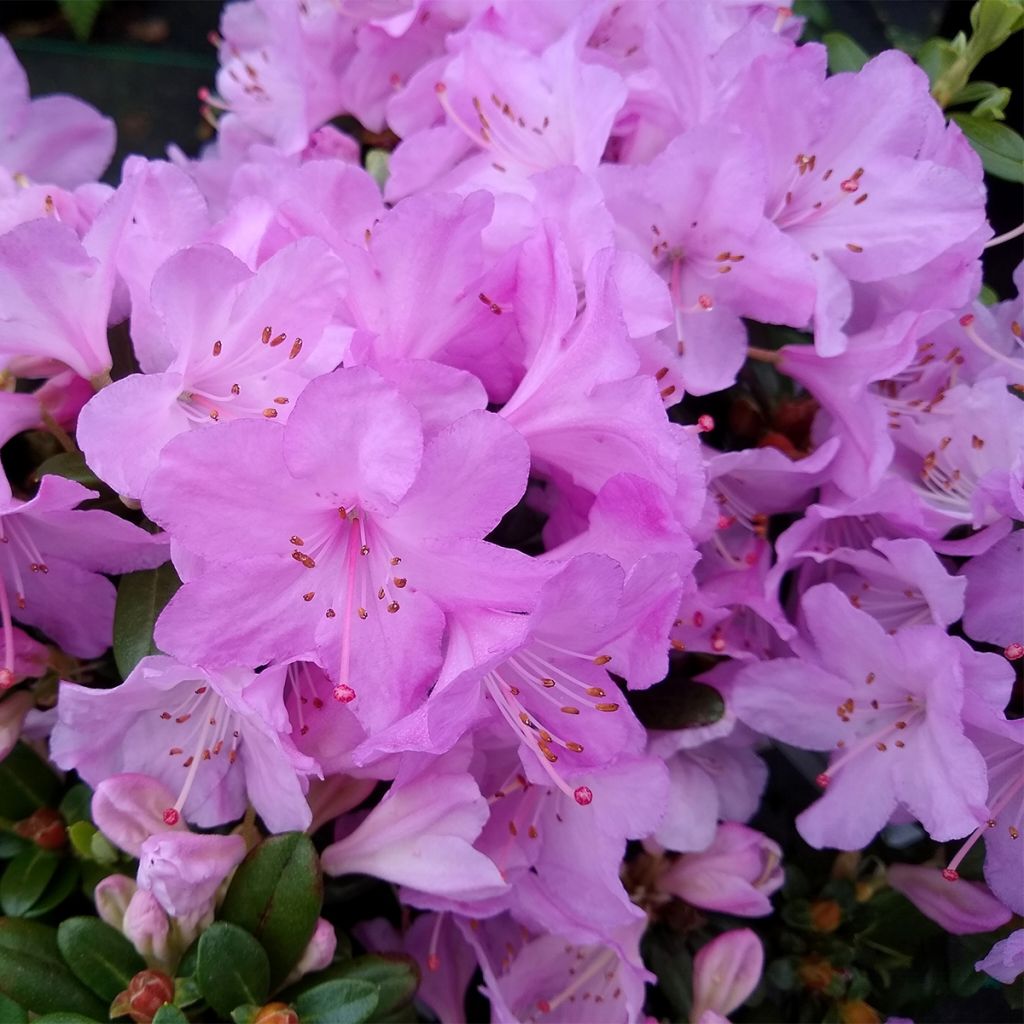

Rhododendron Snipe
Rhododendron Snipe
Rhododendron pemakoense x davidsonianum Snipe
Rhododendron
Young plant arrived in good condition. We will have to wait until next year to see it flower.
Murielle, 14/05/2023
This item cannot be shipped to the selected country
Delivery charge from €5.90
More information
Schedule delivery date,
and select date in basket
This plant carries a 24 months recovery warranty
More information
We guarantee the quality of our plants for a full growing cycle, and will replace at our expense any plant that fails to recover under normal climatic and planting conditions.
From €5.90 for pickup delivery and €6.90 for home delivery
Express home delivery from €8.90.
Does this plant fit my garden?
Set up your Plantfit profile →
Description
The Rhododendron Snipe is a small-sized variety, but full of charm, with dense and regular vegetation and lovely pale pink spring flowering with mauve reflections, speckled with magenta. This bush, which is resistant to cold, has evergreen light green foliage that remains attractive even in winter. It can be planted in an ericaceous bed, in front of larger bushes, or in a large container on a shaded terrace.
Rhododendrons are plants of the family Ericaceae, just like heathers, preferring soils devoid of limestone, with an acidic tendency and humid climates. Resulting from the cross-breeding between Rhododendrons pemakoense and davidsonianum, two species native to the Himalayan mountains, Rhododendron 'Snipe' is a variety that can withstand temperatures as low as -17°C (1.4°F). This hybrid from the 'Bird' series was obtained around 1975 in Glendoick, Scotland, by Peter Cox. The plant forms a dense and well-branched bush with a rounded, slightly spreading habit, reaching a height and spread of 80cm (32in) at maturity. Its growth is rather slow, generally reaching 60cm (24in) by the age of 10. Its evergreen undulate leaves, of light and glossy green, are rounded to elliptical in shape, slightly twisted and provide good coverage of the plant. They have a lighter underside. In April-May, its abundant flowering overwhelms its vegetation: grouped in corymbs, these are beautiful pastel wax-like bell-shaped flowers, iridescent, pale pink shaded with pale mauve, discreetly speckled with magenta, fading almost to white over the course of the days.
Rhododendron 'Snipe' thrives in cool and slightly humid climates in summer, even if winters are cold, as long as it has acidic and well-drained soil. Although they prefer partial shade, rhododendrons can tolerate the sun as long as it is not scorching and their base remains moist. "Snipe", with its exquisite flowering, will easily adorn a small shaded space in the garden, alongside mauve, purple, white or blue flowering plants. When associated with Kalmias, Azaleas, and Pieris, or other rhododendrons from the same group, it allows for the creation of superb patchworks of textures and colours in spring. Growing it in a container requires regular watering with non-limestone water and specific fertilization for ericaceous plants.
Report an error about the product description
Rhododendron Snipe in pictures
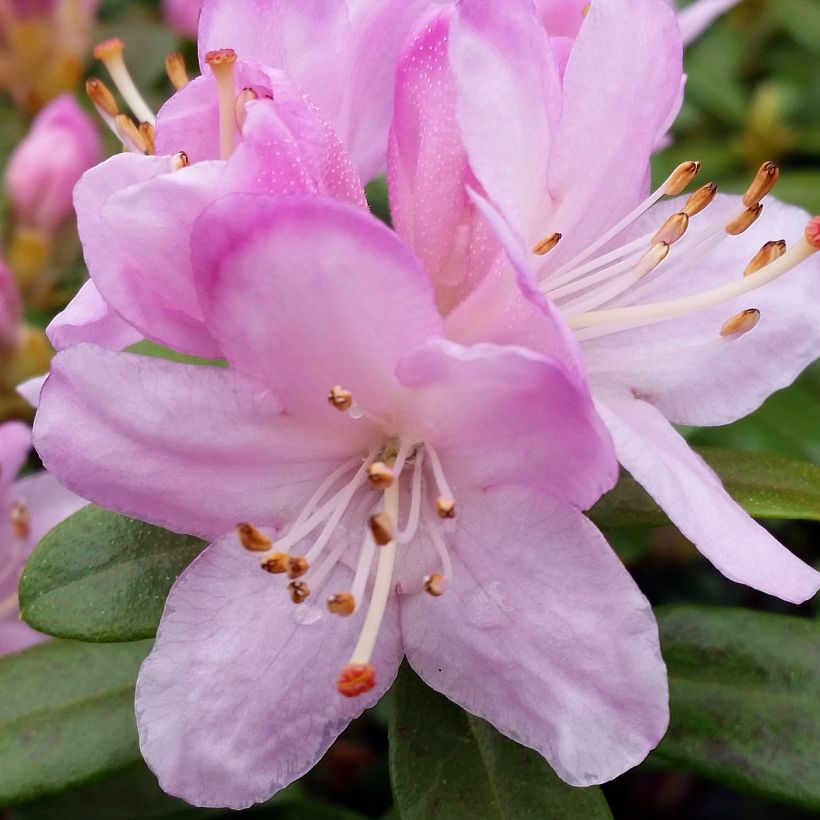

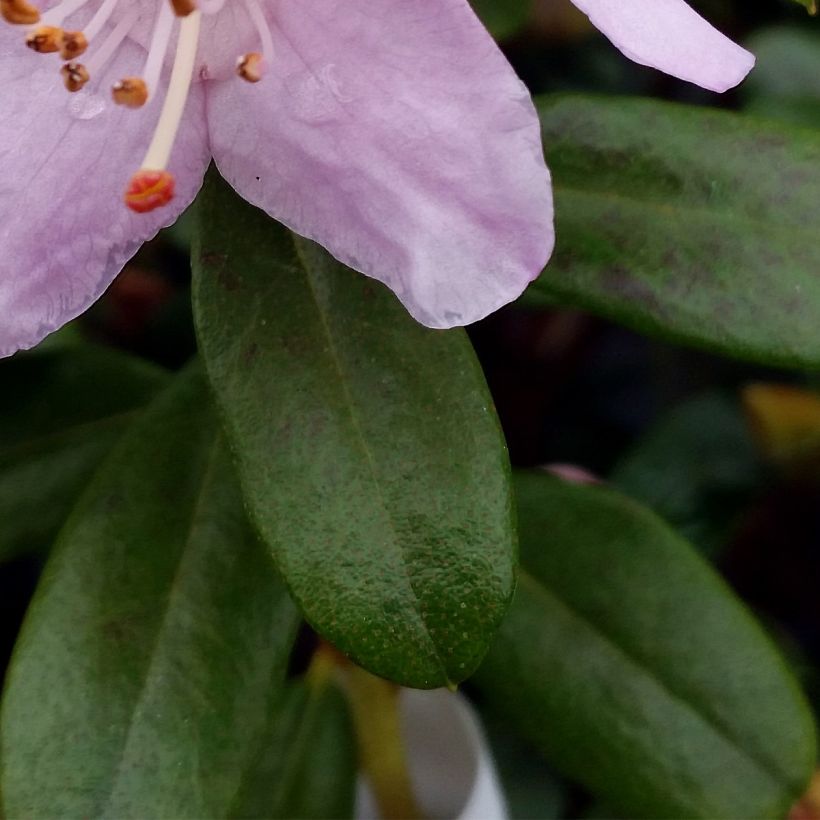

Plant habit
Flowering
Foliage
Botanical data
Rhododendron
pemakoense x davidsonianum
Snipe
Ericaceae
Rhododendron
Cultivar or hybrid
Other Small Rhododendron
Planting and care
Plant the 'Snipe' Rhododendron in a semi-shaded exposure, protected from cold and drying winds, in a moist, humus-rich and light soil, with an acidic tendency (pH 4.5 to 6.0). Like all plants of the heath family, it does not tolerate limestone soils or heavy soils that are waterlogged in winter. If the soil remains moist in summer, this rhododendron can also tolerate exposure to non-burning sunlight. Avoid planting at its base, as its shallow roots do not tolerate competition from other plants, especially for water resources.
Dig a hole three times larger than the pot. Soak the root ball in non-limestone water and plant the bush at the collar level, in a mixture composed of leaf compost, gravel or pumice, and loam. Water generously and keep the soil moist in summer. Azaleas and Rhododendrons have a shallow root system. Therefore, they are susceptible to long periods of drought. That's why humus-enriched soil and abundant watering during dry periods are recommended. In addition, this root system is not very strong, which is why it is essential to lighten heavy soils with draining materials (gravel, pumice, clay pellets) when planting. Place a mulch of shredded pine bark at the base of the bush every spring to keep the soil moist while maintaining an acidic pH.
Maintenance simply involves removing faded flowers in summer and pruning any dead branches. Azaleas and Rhododendrons can sometimes be attacked by weevils that eat the edges of leaves and rootlets, as well as the famous "rhododendron beetle" which does not often cause severe damage. Yellowing of the leaves (chlorosis) in Rhododendrons indicates poor assimilation of iron from the soil and can lead to premature plant death. While limestone is usually the cause, poorly drained soil or a deeply planted root ball can also explain the phenomenon.
"Rhodos" thrive in cooler climates (and even in alpine regions for the most cold-resistant varieties), planted in limestone-free soil and in a humid environment. Their cultivation in warmer and drier climates, on limestone substrates, is often doomed to failure in the long term, despite all attempts to acclimatize them.
Planting period
Intended location
Care
-
, onOrder confirmed
Reply from on Promesse de fleurs
Evergreen shrubs
Haven't found what you were looking for?
Hardiness is the lowest winter temperature a plant can endure without suffering serious damage or even dying. However, hardiness is affected by location (a sheltered area, such as a patio), protection (winter cover) and soil type (hardiness is improved by well-drained soil).

Photo Sharing Terms & Conditions
In order to encourage gardeners to interact and share their experiences, Promesse de fleurs offers various media enabling content to be uploaded onto its Site - in particular via the ‘Photo sharing’ module.
The User agrees to refrain from:
- Posting any content that is illegal, prejudicial, insulting, racist, inciteful to hatred, revisionist, contrary to public decency, that infringes on privacy or on the privacy rights of third parties, in particular the publicity rights of persons and goods, intellectual property rights, or the right to privacy.
- Submitting content on behalf of a third party;
- Impersonate the identity of a third party and/or publish any personal information about a third party;
In general, the User undertakes to refrain from any unethical behaviour.
All Content (in particular text, comments, files, images, photos, videos, creative works, etc.), which may be subject to property or intellectual property rights, image or other private rights, shall remain the property of the User, subject to the limited rights granted by the terms of the licence granted by Promesse de fleurs as stated below. Users are at liberty to publish or not to publish such Content on the Site, notably via the ‘Photo Sharing’ facility, and accept that this Content shall be made public and freely accessible, notably on the Internet.
Users further acknowledge, undertake to have ,and guarantee that they hold all necessary rights and permissions to publish such material on the Site, in particular with regard to the legislation in force pertaining to any privacy, property, intellectual property, image, or contractual rights, or rights of any other nature. By publishing such Content on the Site, Users acknowledge accepting full liability as publishers of the Content within the meaning of the law, and grant Promesse de fleurs, free of charge, an inclusive, worldwide licence for the said Content for the entire duration of its publication, including all reproduction, representation, up/downloading, displaying, performing, transmission, and storage rights.
Users also grant permission for their name to be linked to the Content and accept that this link may not always be made available.
By engaging in posting material, Users consent to their Content becoming automatically accessible on the Internet, in particular on other sites and/or blogs and/or web pages of the Promesse de fleurs site, including in particular social pages and the Promesse de fleurs catalogue.
Users may secure the removal of entrusted content free of charge by issuing a simple request via our contact form.
The flowering period indicated on our website applies to countries and regions located in USDA zone 8 (France, the United Kingdom, Ireland, the Netherlands, etc.)
It will vary according to where you live:
- In zones 9 to 10 (Italy, Spain, Greece, etc.), flowering will occur about 2 to 4 weeks earlier.
- In zones 6 to 7 (Germany, Poland, Slovenia, and lower mountainous regions), flowering will be delayed by 2 to 3 weeks.
- In zone 5 (Central Europe, Scandinavia), blooming will be delayed by 3 to 5 weeks.
In temperate climates, pruning of spring-flowering shrubs (forsythia, spireas, etc.) should be done just after flowering.
Pruning of summer-flowering shrubs (Indian Lilac, Perovskia, etc.) can be done in winter or spring.
In cold regions as well as with frost-sensitive plants, avoid pruning too early when severe frosts may still occur.
The planting period indicated on our website applies to countries and regions located in USDA zone 8 (France, United Kingdom, Ireland, Netherlands).
It will vary according to where you live:
- In Mediterranean zones (Marseille, Madrid, Milan, etc.), autumn and winter are the best planting periods.
- In continental zones (Strasbourg, Munich, Vienna, etc.), delay planting by 2 to 3 weeks in spring and bring it forward by 2 to 4 weeks in autumn.
- In mountainous regions (the Alps, Pyrenees, Carpathians, etc.), it is best to plant in late spring (May-June) or late summer (August-September).
The harvesting period indicated on our website applies to countries and regions in USDA zone 8 (France, England, Ireland, the Netherlands).
In colder areas (Scandinavia, Poland, Austria...) fruit and vegetable harvests are likely to be delayed by 3-4 weeks.
In warmer areas (Italy, Spain, Greece, etc.), harvesting will probably take place earlier, depending on weather conditions.
The sowing periods indicated on our website apply to countries and regions within USDA Zone 8 (France, UK, Ireland, Netherlands).
In colder areas (Scandinavia, Poland, Austria...), delay any outdoor sowing by 3-4 weeks, or sow under glass.
In warmer climes (Italy, Spain, Greece, etc.), bring outdoor sowing forward by a few weeks.

































